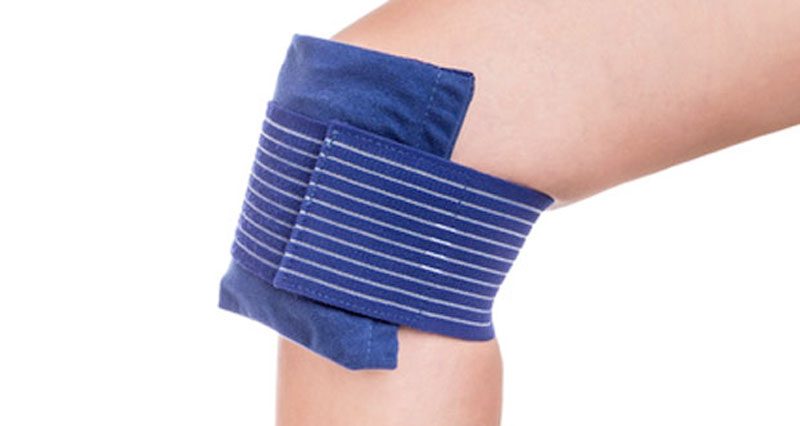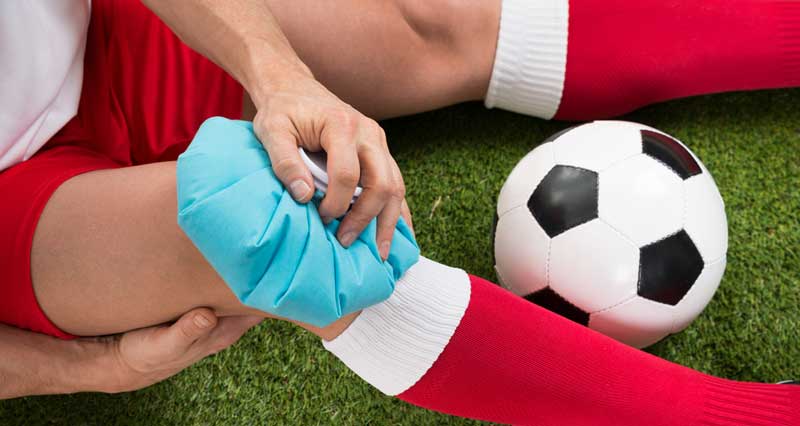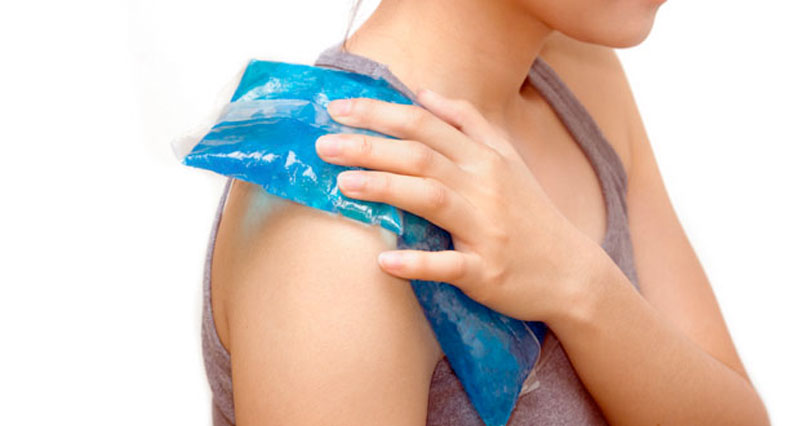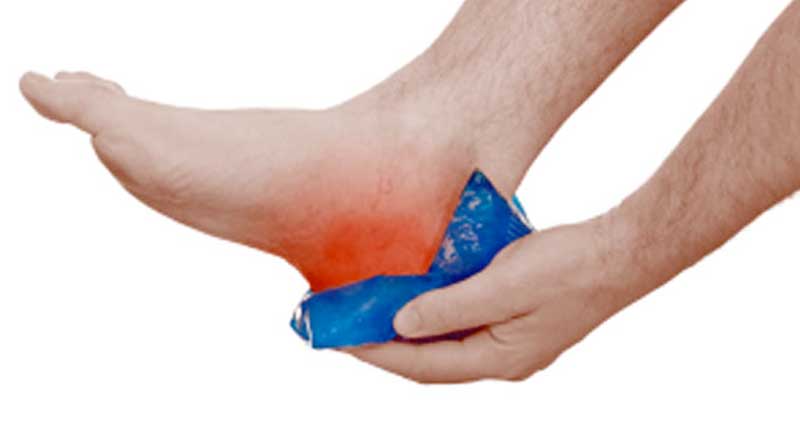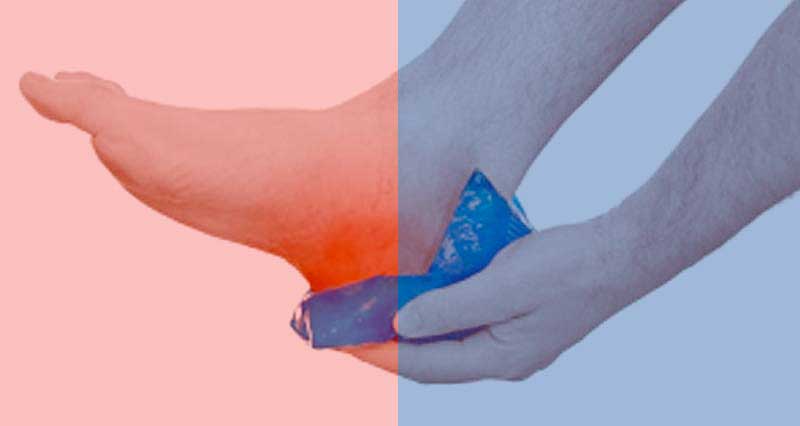Cold therapy or Cryotherapy is a popular treatment method for sports injuries. It is important for first aid for acute (sudden onset) sports injuries as well as being beneficial for long-term, chronic injuries. Here we explain when to use cold therapy, its benefits, as well as when it is not safe (contraindicated) to apply ice.
The Cold Therapy PRICE Principles
The PRICE principles are the gold standard set for treating acute sports injuries. The acronym stands for Protection, Rest, Ice, Compression, and Elevation.
Ice or cold therapy should be applied as early as possible after injury and continued for at least the first 24-72 hours. If you apply cold early enough and correctly, you can significantly reduce recovery time.
Protection
- Protection of the damaged tissue is vital to prevent further injury and damage to the tissues.
- This can be in the form of immobilization with a splint or sling, wearing a support or brace or sports taping techniques.
Rest
- This is essential to allow injured tissues to heal and is often overlooked. Rest may mean complete rest, or it could just mean modifying training activities, for example switching to running for a hand injury.
Ice
- Cold therapy is one of the most widely used treatments for acute sports injuries.
- Ice can decrease swelling by constricting blood vessels, and reduce pain by blocking pain signals to the brain.
- This reduces muscle spasms and decreases the risk of cells dying by decreasing the rate of cell metabolism.
Compression
Compression to an injured area reduces the amount of swelling that forms following an injury by narrowing blood vessels and moderating the tissue fluids your body produces when injured.
Elevation
Elevating the injured limb is equally as important as the other 4 and allows gravity to drain the fluid away from the injured site. This helps reduce swelling which in turn may decrease the pain.
Read more on the PRICE principles.
Contraindications of cold therapy
When is it not safe to apply cold therapy? A contraindication to cold therapy is an injury or condition that would make applying cold therapy to a sports injury dangerous. This means that if you have any of the conditions below then applying cold therapy is likely to be bad for you or cause further injury.
Please note: The following list is not exhaustive and we recommend seeing your doctor for professional advice if you are in any doubt.
Raynaud’s Phenomenon
Raynaud’s is a condition affecting small blood vessels in the extremities (hands and feet). Symptoms include a change in skin colour when exposed to cold and the hands and feet may feel numb or painful.
Cold Hypersensitivity
There are many forms of cold hypersensitivity, which include:
Cold Urticaria – Also known as hives. A release of histamine during re-warming after a period of cooling, causes red, itchy welts on the skin.
Cold Erythema – A rash, characterised by redness and itching, caused by exposure to cold. Can cause severe pain and muscular spasms.
Cold Hemoglobinuria – When red blood cells break down so quickly that some haemoglobin cannot combine with blood proteins.
Anaesthesia
When there is an area of numbness or altered sensitivity, cold therapy should not be used as the patient will be unaware of pain levels, and the degree of cooling.
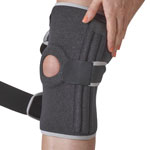
Buy Knee Braces
Controversial conditions
The following conditions are considered controversial. They can be treated with cryotherapy, although extra care may be needed. Again, we recommend seeking professional advice if you are in any doubt.
Cardiac Conditions – such as Arthymia, Angina or CHD.
High Blood Pressure – Vasoconstriction could serve to increase blood pressure.
Superficial Nerves – Cold therapy should not be used on an area where nerves pass close to the surface.
Healing Wounds – Cold therapy should not be used over a new wound.
Hot vs Cold therapy
Should I apply hot or cold therapy? There is often confusion following an injury concerning whether to apply cold therapy or whether to warm the area. The answer depends on the type of injury you have sustained.
Acute injuries
Acute injuries are those which result from traumatic incidents, for example, a fall, twisting movement, or direct blow for example, and are immediately painful. When an acute injury first occurs, bleeding, inflammation, swelling, and pain must all be controlled. Ice should be applied as soon as possible in order to cool the tissues, reduce their metabolic rate and nerve conduction velocity and cause vasoconstriction of the surrounding blood vessels.
Ice should remain in contact for up to 20 minutes at a time depending on the size of the area being treated and the depth of the injured tissues. It should be re-applied regularly, every 1-3 hours. Following approximately the first 3-5 days of an acute injury, once bleeding has stopped and there are no signs of inflammation, you may wish to alternate cold and heat treatments.
Apply cold for 10 minutes, followed immediately by 10 minutes of heat. Doing this causes massive increases in blood flow to the area as the vasoconstriction caused by cooling reverses when heat is applied. This results in an influx of blood to the damaged tissues. Ensure all bleeding has stopped before applying this technique. Blood is vitally important in providing all of the energy and nutrients that the body needs for repair.
Chronic injuries
Chronic injuries usually do not present with a sudden onset. They tend to gradually build up over a period of days, weeks, or longer and are often caused by overuse or biomechanical abnormality. A chronic injury can also be caused by an acute injury that fails to heal due to a lack of, or inappropriate treatment.
Heat therapy should be applied for 15-20 minutes in the form of hot water bottles, a warm damp towel, heat rub or commercially available heat pads. If using something such as a hot water bottle, ensure a suitable layer of protection is placed over the skin to prevent burns.
In general, heat should be used to treat chronic injuries, to help relax tight, aching muscles and joints, increase the elasticity of ligaments and tendons and increase the blood flow to the area. Heat therapy can also be used prior to exercise in chronic injuries to warm the muscles and increase flexibility.
The only time ice should be used on chronic injuries is after exercise, to reduce any residual swelling.
Cryostretching
Cryostretching is a technique combining cold therapy or cryotherapy and stretching. Application of a cold pack is used to reduce muscle spasms and so increase flexibility. It involves three phases, cold application, static stretching, and then the contract-relax technique.
First, the body part is cooled for up to 20 minutes at which time it should become numb. Following these two sets of 65-second stretches are applied with a 20-second rest between sets. Each period of 65 seconds consists mainly of static stretching, with three 5-second isometric contractions interspersed throughout the stretch.
There should not be any pain throughout the procedure. Ice reduces muscle spasms allowing the muscle to relax more and so increasing the stretch. Static stretches overcome the stretch reflex to reduce muscle spasms. Muscle relaxation is often greater following a contraction than before
